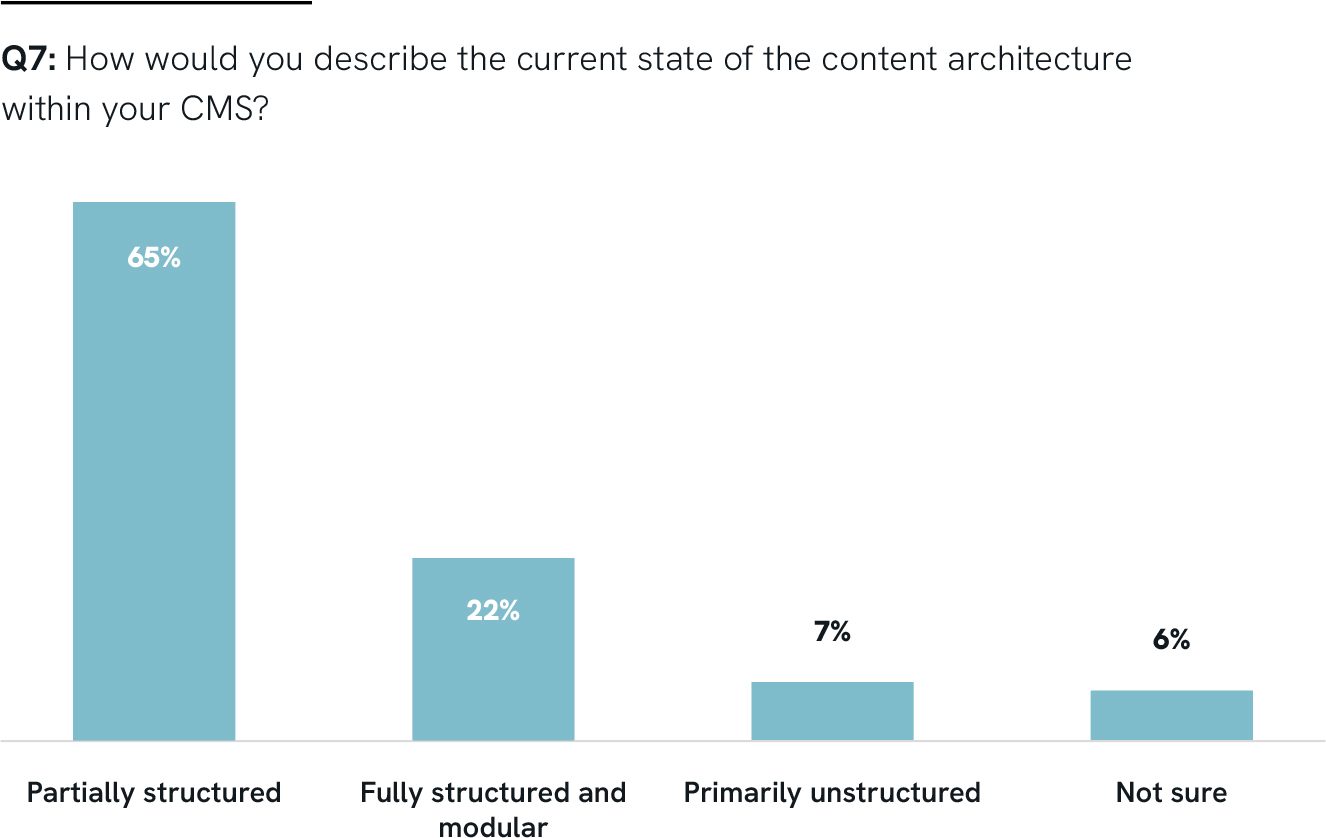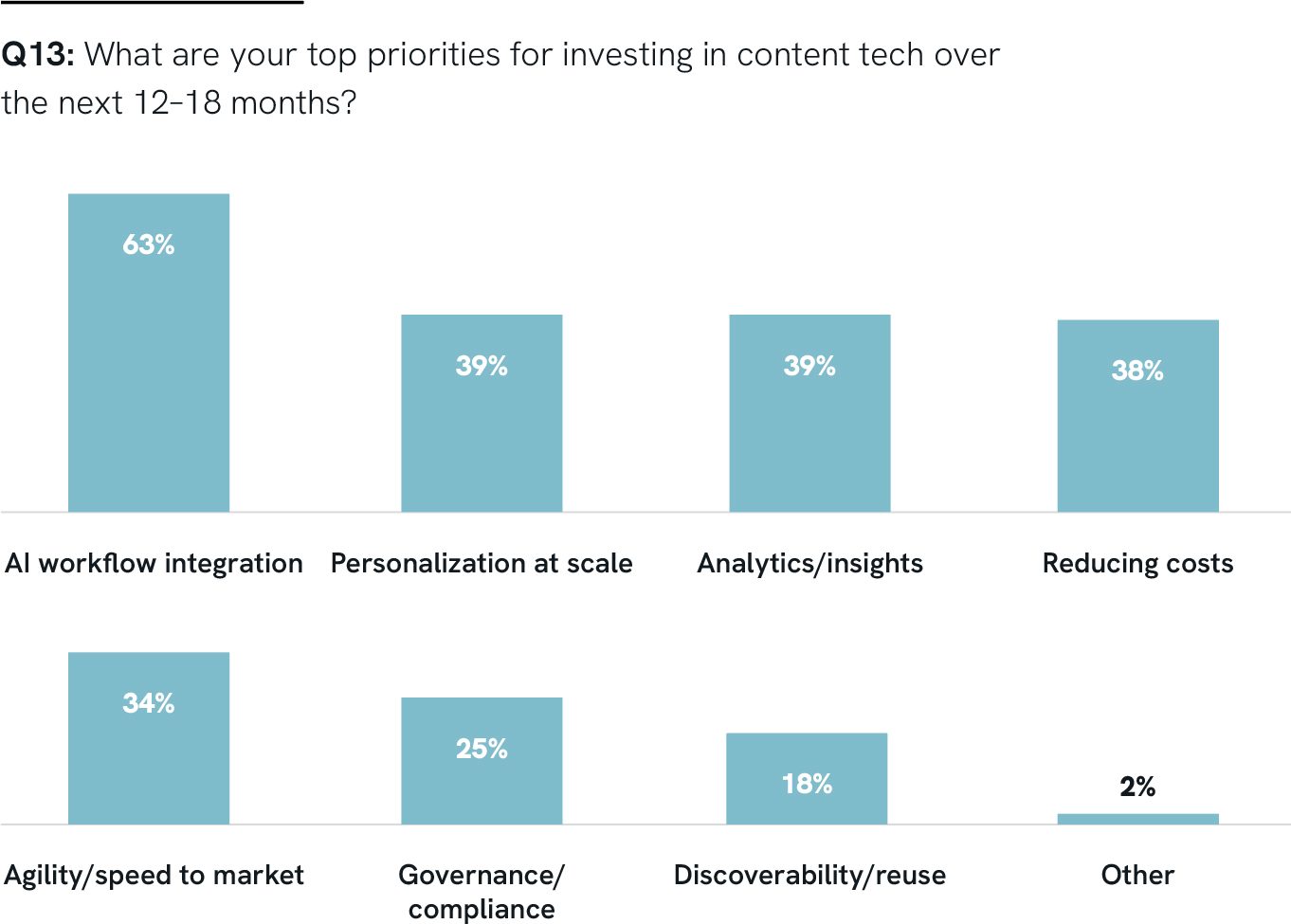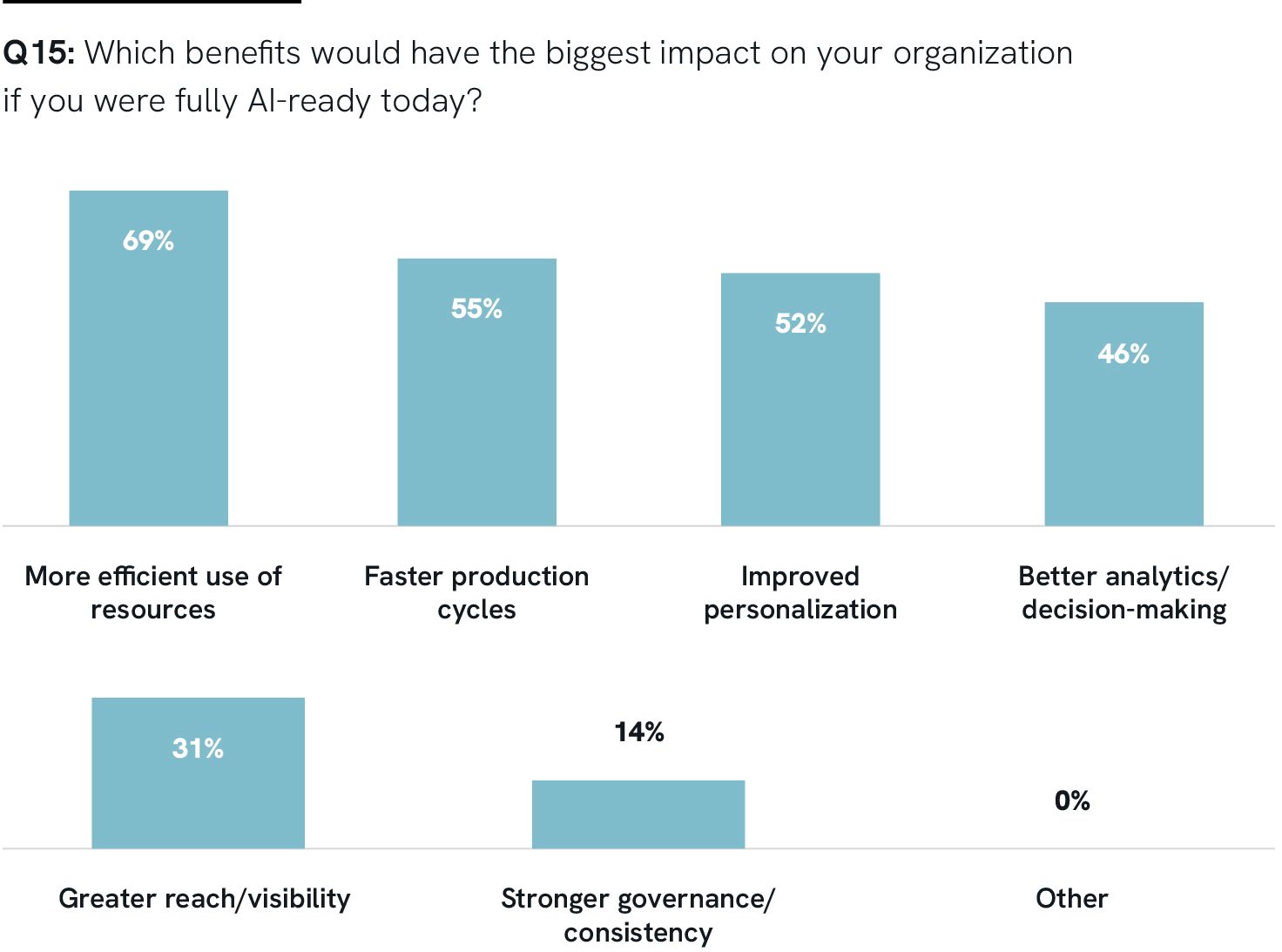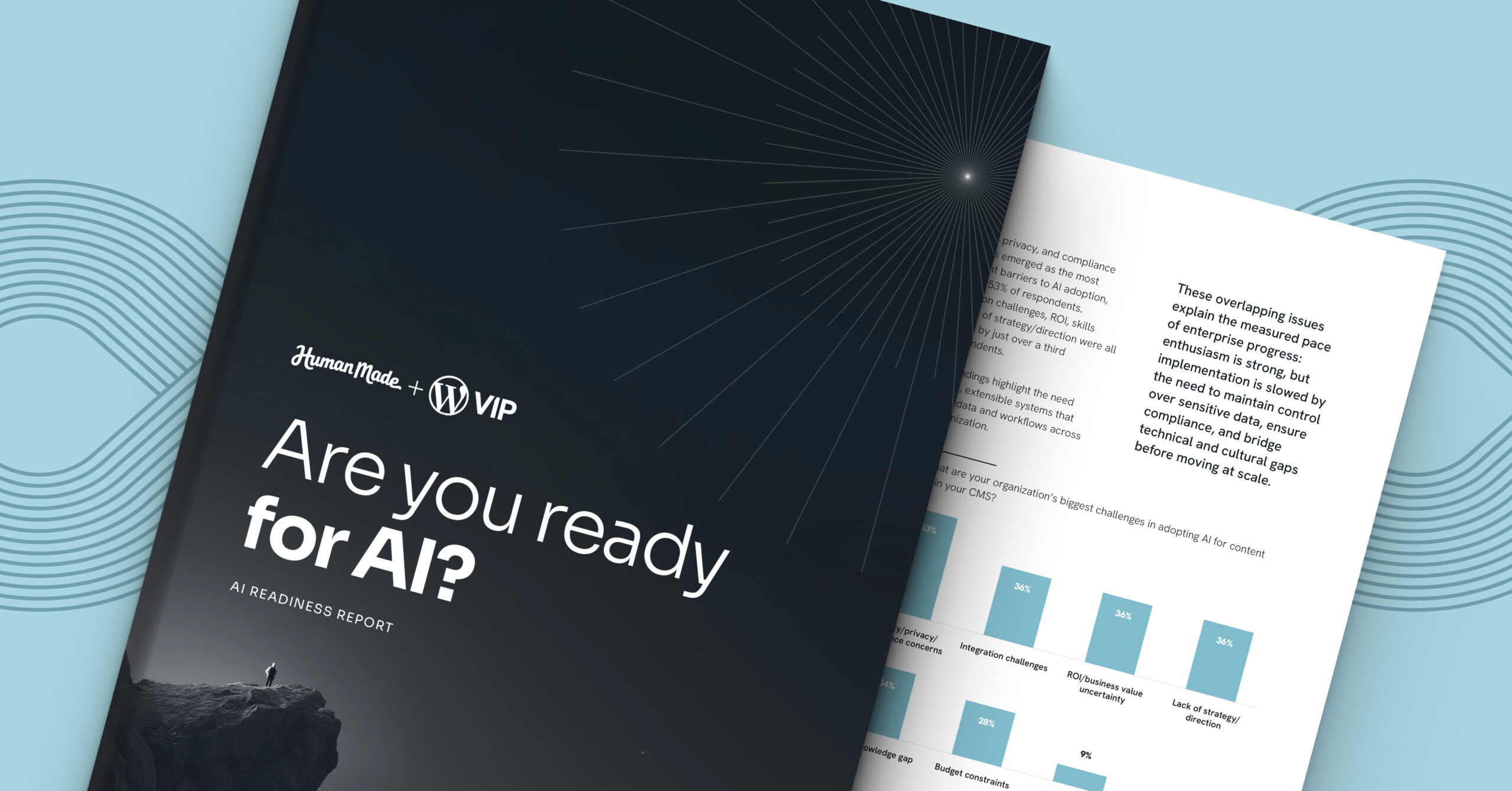The research report ‘Are you Ready for AI?’ – a collaborative project between Human Made and WordPress VIP – unpacks a data-driven look at how enterprise marketing and technology teams are preparing for the AI-native future. Drawing on insights from 99 senior digital leaders across major enterprise organisations, it provides a practical benchmark to help you understand where your own AI adoption stands.
The findings point to a clear message: in a world where AI is accelerating business transformation, standing still is no longer an option. Now is the time to assess your next moves, because the decisions you make today – around people, processes, platforms and data – will determine whether your organisation pulls ahead or is left behind.
In this blog, we explore five key takeaways from the report, backed by data, showing how enterprises can progress from AI experimentation to full-scale adoption.
1. AI is now essential to success.
The research reveals near-unanimous agreement among senior digital leaders: AI is no longer a nice-to-have – it’s a critical driver of future success. Almost every respondent (94%) believes that effective AI adoption is either important or vital to their organisation’s long-term competitiveness. This marks a decisive shift from viewing AI as an experimental add-on to recognising it as a foundational capability.
However, the data also exposes significant tension. While confidence in AI’s strategic importance is high, many organisations are not yet equipped to realise its full potential. Fewer than one in three leaders feel their current CMS gives them a competitive advantage when adopting or scaling AI. This gap between belief and capability is where risk – and opportunity – lies.

For enterprise organisations, this disconnect signals the need for deeper alignment between leadership vision, operational processes, and the underlying technology stack. Without this alignment, even the most ambitious AI strategies struggle to move beyond isolated experiments and into meaningful, organisation-wide impact.
Takeaway: AI is now a strategic imperative. The organisations pulling ahead are those that treat AI as a long-term driver of value and ensure that leadership, systems, and strategy are aligned to support adoption at scale.
2. Architecture is the main barrier.
The data shows that most enterprises are still building the foundations needed for AI. Over half of leaders (65%) describe their CMS architecture as partially structured, indicating progress but not full readiness. Only 22% report having a fully structured and modular system — the kind of architecture that enables true automation and AI-driven personalisation.
A smaller group remains further behind: 7% say their CMS is still unstructured, and 6% are unsure of its state. This spread highlights a clear divide. While some organisations are creating AI-ready content foundations, the majority are working within systems that still limit how far automation and integration can reach.

Takeaway: AI needs well-structured, modular content to function effectively. Strengthening your content architecture is one of the most important steps toward enabling automation, enrichment, and meaningful personalisation at scale.

Are you AI Ready?
A strategic research report for enterprise decision-makers navigating the next phase of AI adoption.
3. Security and integration slow adoption.
The data shows that many enterprises are held back not by ambition, but by concerns around risk and operational complexity. Over half of respondents (53%) cite security, privacy, and compliance as major barriers to AI adoption, underscoring the growing pressure to innovate responsibly.

Integration issues are also a significant hurdle, with 36% pointing to challenges connecting AI capabilities into existing systems, while 34% highlight skills and knowledge gaps within their teams.
Together, these factors create friction that slows progress and raises the stakes for organisations investing in AI. Strong governance frameworks and clear oversight are becoming essential prerequisites for scaling AI safely and effectively.
Takeaway: AI readiness is also risk readiness. Organisations that build the capability to innovate safely are the ones best positioned for sustainable, long-term AI adoption.
4. Investment focus is shifting to enablement.
The data shows a clear move from experimentation toward operational transformation. AI workflow integration is now a top priority for enterprises, selected by 63% of respondents. Rather than treating AI as a standalone initiative, organisations are increasingly focused on embedding it into everyday processes to drive efficiency and scale.
A second tier of priorities reflects a balanced approach to value creation. Leaders are targeting analytics and insights (39%), personalisation at scale (39%), and cost reduction (38%), signalling that they aim to combine automation, intelligence, and improved customer experience. Meanwhile, agility and speed to market (34%) remain important as teams look to produce and adapt content more quickly.

Collectively, these shifts suggest that enterprises are beginning to build intelligent workflows, where AI-driven insights and automation are directly connected to content creation, publishing, and optimisation.
Takeaway: AI investment is moving beyond pilots. Organisations are now prioritising the workflows, processes, and capabilities that enable AI to deliver real, scalable operational impact.
5. Efficiency is the leading payoff.
Leaders are clear about the outcomes they expect AI to deliver. The top anticipated benefit is more efficient use of resources, selected by 69% of respondents. This emphasis on efficiency reflects a broader ambition to redirect time, budget, and talent toward higher-value work.
Other expected benefits follow closely: faster production cycles (55%) and improved personalisation (52%). Together, these benefits point to a consistent goal across enterprises — using AI to increase productivity while strengthening audience connection.

These expectations reinforce the direction of current investments: organisations want AI that delivers measurable gains in speed, quality, and operational performance.
Takeaway: Enterprises see AI readiness as a pathway to greater efficiency, faster delivery, and more personalised experiences — the core drivers of competitive advantage in an AI-native environment.
Final thoughts on the AI Readiness Report
The AI Readiness Report makes one thing clear: enterprises are moving from AI curiosity to AI capability. The organisations making the most progress are those treating AI as a foundation, not a feature — integrating it into the very fabric of how content, data, and technology work together.
This research reflects what we’re seeing across the enterprise landscape: AI readiness isn’t about replacing human creativity; it’s about amplifying it through structured, connected, and intelligent systems. The biggest gains come when teams modernise their content architecture, strengthen governance, and build AI-literate workflows that unlock agility, automation, and smarter decision-making.
As enterprises transition into an AI-native future, those that invest early in alignment — across people, processes, platforms, and data — will be the ones who turn potential into lasting competitive advantage.
Explore the full report, or get in touch if you’d like to learn how we help enterprise teams build AI-ready systems that deliver measurable, long-term value.
